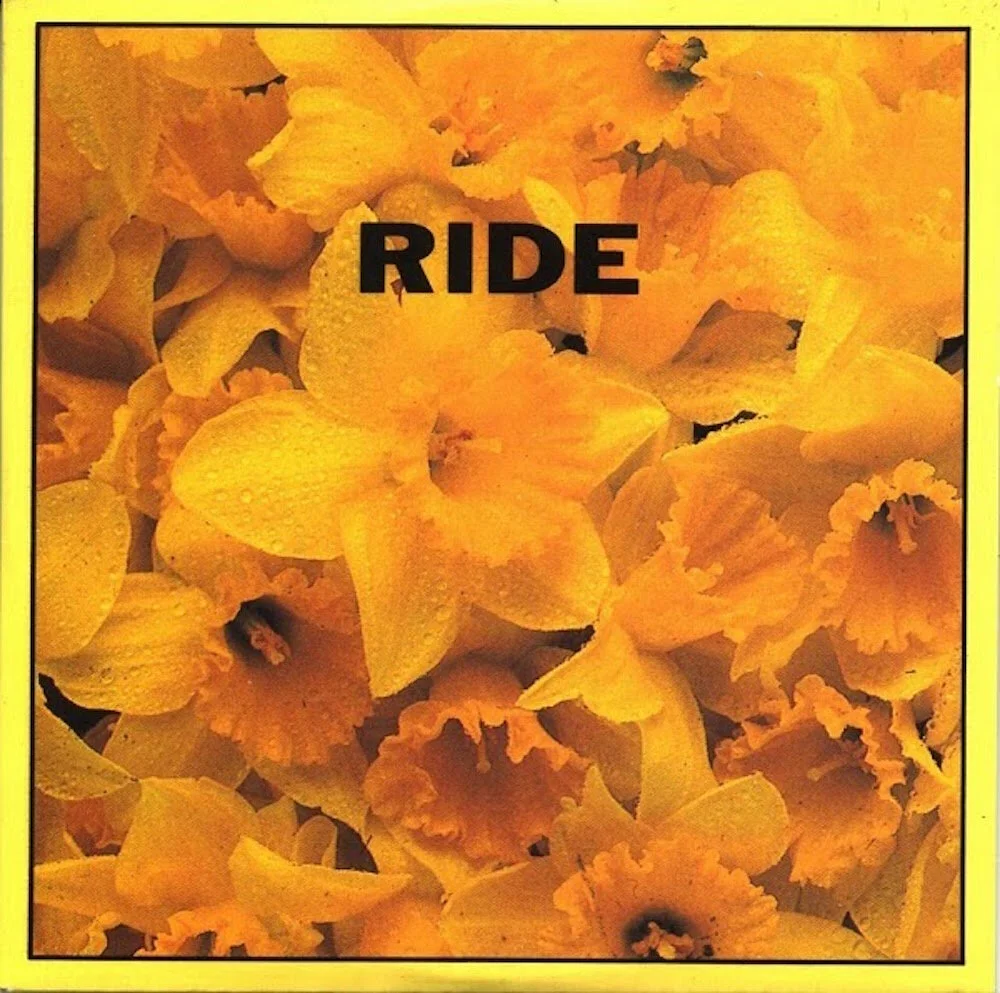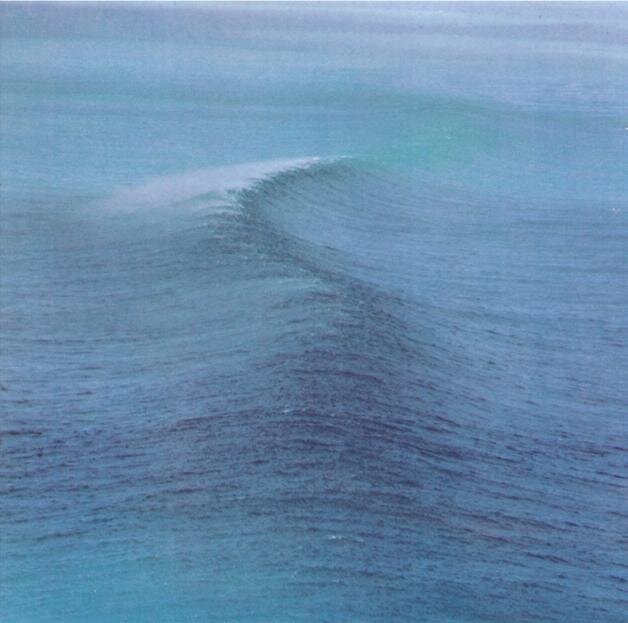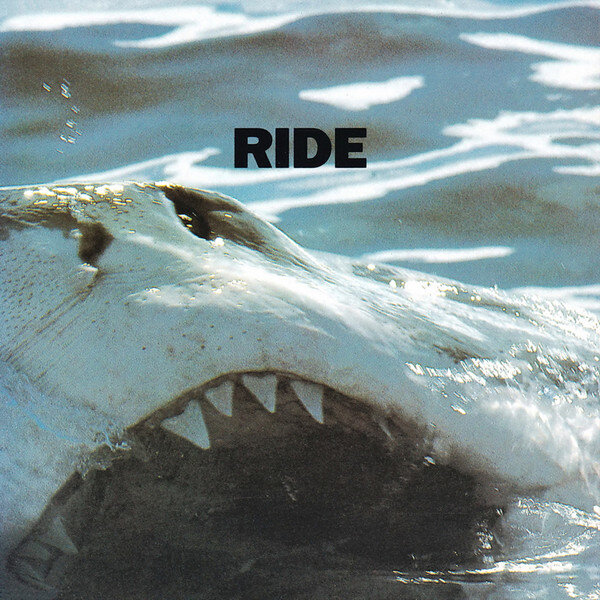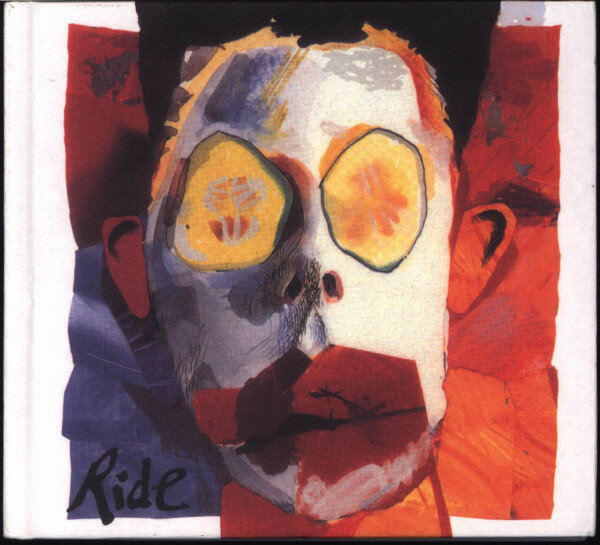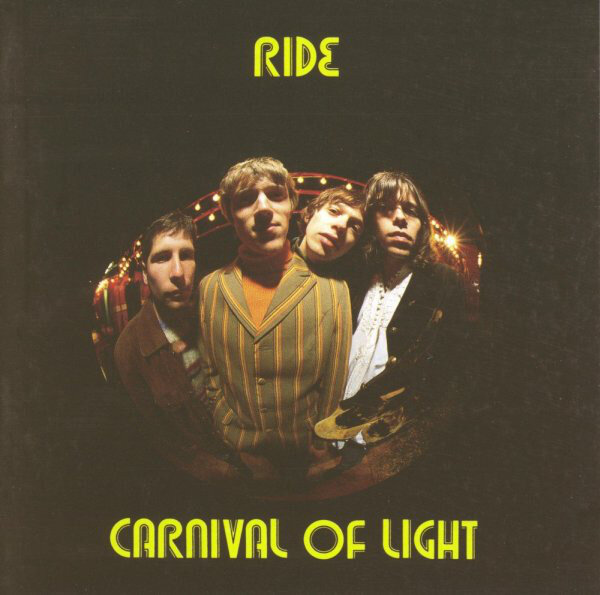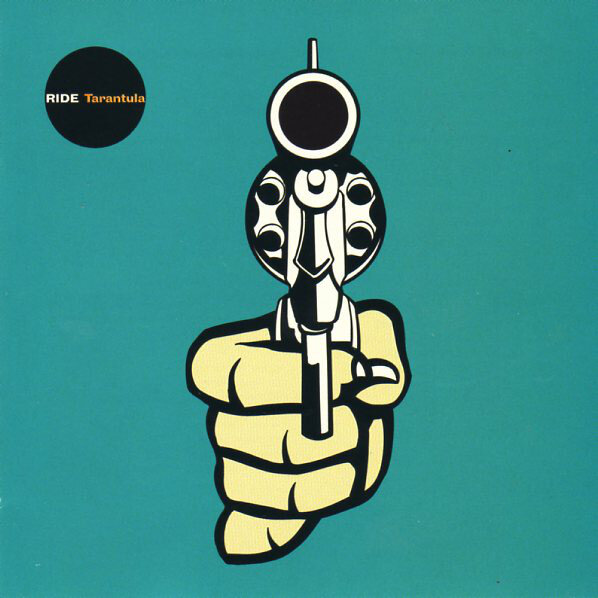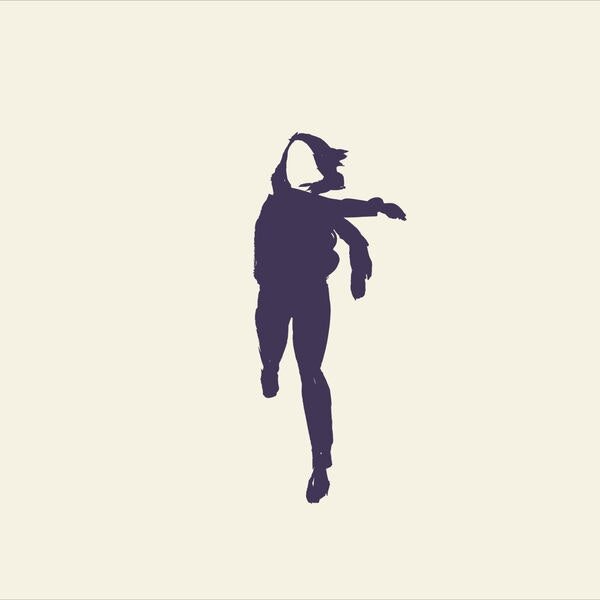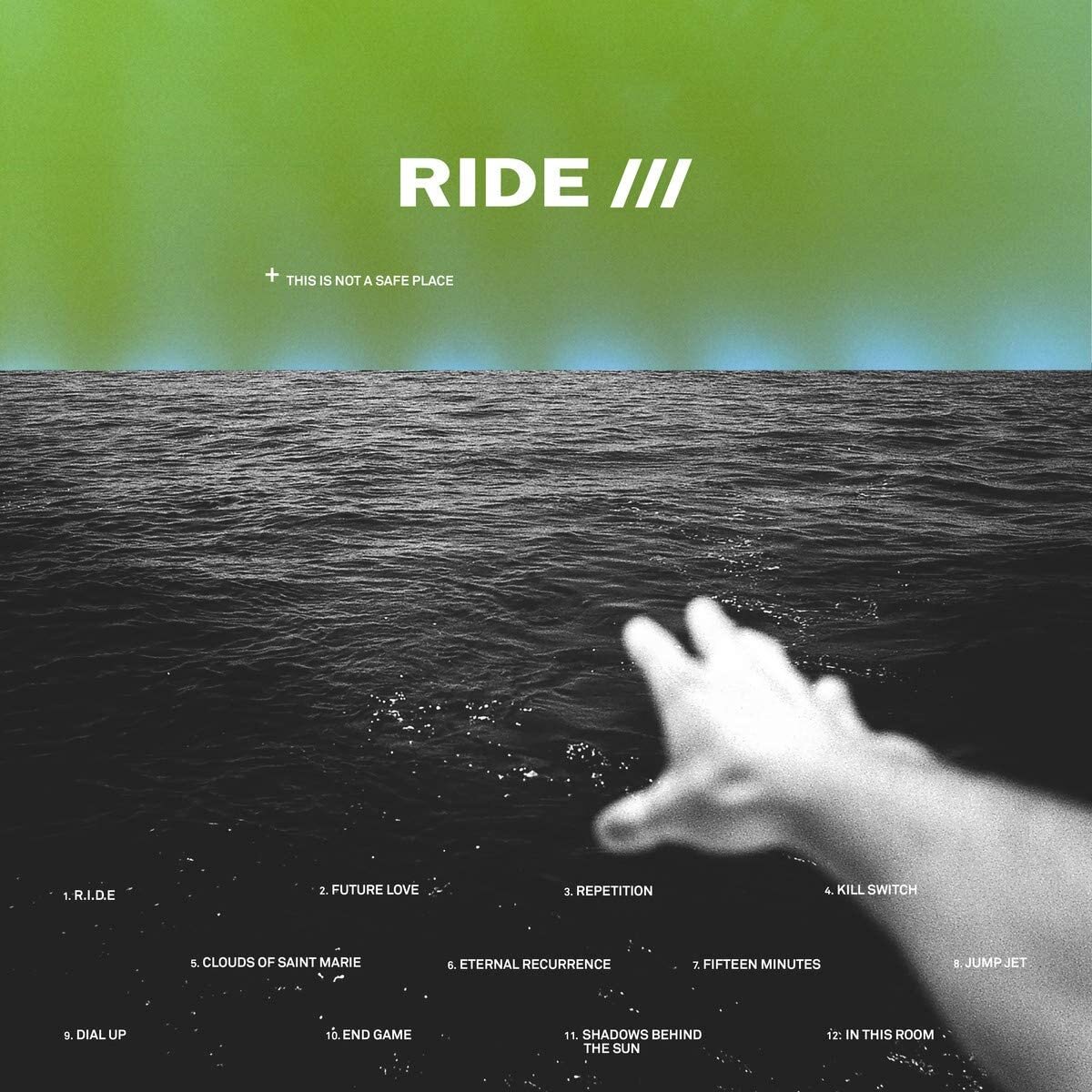Rocket Silver Symphony: A Retrospective of Ride
Click below on the streaming service of your choice to listen to the playlist as you read along.
The disparities of success for artists around the world can be perplexing, especially for modern rock artists and between the UK, Europe, and North America. In this case we’re looking at Ride, a band that has had five top twenty albums (out of six) in the UK but has had very limited success in North America. Each time I’ve seen them in Toronto they have played to healthy crowds of one thousand or more and have been enthusiastically received, but have not had much commercial or chart success this side of the Atlantic.
A young looking Ride. The band members were 20-21 the year of their memorable debut. (L to R): Mark Gardener, Steve Queralt, Andy Bell, and Loz Colbert.
Mark Gardener and Andy Bell attended secondary school together in Oxford, England and then moved on to art college just north in Banbury. The duo guitarists/vocalists were looking to form a band at college and connected with Steve Queralt, who had attended the same secondary school as them, had played in a prior band with Bell, and was now attending the same college. He joined on bass along with fellow student, Laurence ‘Loz’ Colbert, on drums. They chose the name Ride after the type of cymbal and the feeling of movement it suggested. They played their first gig at their college in late 1988.
Ride’s demos and gigs got the attention of Jim Reid of Jesus and Mary Chain, who put them on to Alan McGee of Creation Records and the band was signed. What followed in 1990 was an astounding debut year in which Ride released three EPs and an album, all of which were impeccable and part of a ground-breaking sound known as shoegaze. Two of the EPs cracked the UK top forty in the singles chart and the album nearly reached the top ten of the albums chart.
The EPs, Ride, Play, and Fall, showed a quick evolution of the band despite being released only eight months apart. The first converted their demos into proper studio takes and revealed a band with great power and hooks but with a raw, unpolished sound, which did nothing to take away from the brilliance of the songs. “Chelsea Girl” was a fantastic sprint of thrashing guitars underpinning their somewhat monotone, harmonic vocals. “Drive Blind” was a dirgy, hypnotic wash of guitars over pounding drums, all with a slight echo as if recorded in a big room. Their sound blended rock, pop, punk, and a hint of garage rock into a slightly chaotic, barely restrained energy.
Play and Fall delivered more great songs as both EPs reached the UK top forty. “Like A Daydream” and “Furthest Sense” from Play continued their refinement of the punky, crashing sounds of their debut but with more polish and a bigger sound. In July 1990, the Ride and Play were released in North America as an album, Smile¸ which would be my introduction to them and made for a fantastic LP. Following in September, all four tracks on Fall were incredible, from the mix of power, grace, and turmoil of, “Dreams Burn Down,” to the power pop and harmonies of, “Taste,” to the thick morass and harmonica accented freight train of, “Here and Now,” to finally the moody, murky, menace of “Nowhere,” Ride was forging a unique brand during an exciting period of modern rock. And though the band always eschewed the association with shoegaze, they were undoubtedly one of the critical acts developing the guitar heavy and dreamy sound that would come to define that sub-genre.
Released only one month after that third EP was the debut album, Nowhere. It included the Fall track, “Dreams Burn Down,” but oddly not the one that would have been the title track (though not titled as a single, Fall could be seen as the first single release from Nowhere). Over thirty-eight minutes and eight songs, the album continued the unblemished consistency of their EPs. Its power, hooks, dreamy passages, and mix of hard rock and pop made Nowhere one of the best albums of the decade and one of the best LPs of the shoegaze era. The album’s closing track, “Vapour Trail,” was a step above, bringing the sombre elegance of cello and violin into the band’s mix of dreamy power pop. Mark Gardener tended to take the lead vocals on most tracks, but on this one it was Andy Bell’s lighter tone that played the perfect tandem to the song’s thundering rhythm. It was the ideal ending to a perfect album, but yet on the CD release the additional three tracks from the Fall EP were added, pushing “Vapour Trail” into the middle of the LP.
Early ’91 saw the release of another EP, Today Forever, which produced another consummate shoegaze track, “Today.” Its dreamy textures and slow build to a stirring crescendo would be one of the hallmarks of the sound. The EP would also be tacked onto re-issues of Nowhere, further extending that album’s length but certainly making for an excellent collection of tunes.
After a frenetic first fifteen months that saw five releases, Ride took a full year before issuing their next, the second album, Going Blank Again. It was preceded by a month by the release of the first single and the album’s opening track, the epic “Leave them All Behind.” The lengthy track’s massive sound was breathtaking, capped by an abrupt ending. It reached the top ten in the UK singles chart, their only one that would surpass that threshold. It also reached the top twenty in the US Alternative chart, as did the follow-up single, “Twisterella,” which would also be the band’s peak of success overseas. Overlooked, indeed.
As much as Going Blank Again offered more shoegaze brilliance, such the opening track and the dreamy, “Chrome Waves,” much of it delved into a lighter, brighter pop style that marked a notable shift in the band’s sound. “Twisterella” was such an example, as was “Making Judy Smile,” which blended their heavier shoegaze tones into a hooky, pop ditty. “Not Fazed” blended their edgier rock sound with a pop feel, while “Mouse Trap” and “Time of Her Time” lightened the feel while giving up none of their frenetic energy. Going Blank Again was another fantastic album with no weak songs and scored the band a top ten spot in the UK albums chart. I saw them play in Toronto with fellow shoegazers, Slowdive, as the opening act, and it was a memorable show.
They also offered many additional gems via their single releases, which were usually EPs featuring two or three additional tunes, none of which could be discounted. Similar to “Nowhere,” again what would have been the title track for Going Blank Again did not appear on the LP but rather was a track on the Twisterella EP.
Ride tended to thematically link the visuals in their releases. The first three EPs, Ride, Play, and Fall, as well as the compilation, Smile, all had floral visuals on the covers. The EPs/singles from Going Blank Again featured children on the covers, as seen above: Leave Them All Behind, Twisterella, and the compilation of the two for release in Japan, the EP, Grasshopper.
Ride followed those great two albums with two more which were solid but failed to sustain the high quality of output. 1994’s Carnival of Light struggled to find the grace and hooks of their earlier work, leaving many of the songs muddled and less engaging. There were many good moments, but after the high expectations created by their work to date, it fell back a bit. They offered a cover of the song, “How Does It Feel to Feel,” by ‘60s garage rock band, The Creation, who had been the inspiration for their label’s name. As shoegaze had ebbed away from a more prominent place in the UK music scene and was giving way to its offspring, Britpop, the band found their sound not quite in either camp. Though the LP reached the top ten, overall sales and critical response were much lower than what the band was accustomed.
As recording of the fourth album, Tarantula, progressed in 1995 problems in the band came to a head. Bell and Gardener were increasingly divergent in the direction they wanted to take Ride’s sound, with Bell favouring Britpop and Gardener wanting to go more electronic and dance. Carnival of Light had seen the duo move away from collaborative writing to instead offering an LP with each side exclusively from each writer. Tarantula became primarily the product of Andy’s work, with all tracks but two being penned by him. Mark walked out during the album’s mixing, leading to the band announced their break-up just before the LP was released in March 1996. Creation removed it from their catalogue a week after it was issued.
Regardless, Tarantula almost cracked the top twenty in the UK albums chart though the single, “Black Nite Crash,” failed to reach the top forty. The album had a bluesier, purer rock feel along the lines of where Bell had wanted to take the band. Many songs harkened back to a ’60s sound. And while there were many solid tracks on the LP, it lacked the distinct personality of the band’s original style.
Aside from a one-off reunion in 2001, Ride then spent the next nineteen years apart. Andy Bell formed a band, Hurricane No. 1, before joining Oasis as a bass player in 1999, playing on the final three LPs and through to the band’s dissolution in 2009. Gardener and Colbert formed, Animalhouse, a band that stayed together through 2002 before Mark embarked on a solo career.
My pic of their 2015 reunion tour show in Toronto
The brief reunion in 2001 had engendered renewed interest in the band, and the enduring legacy and interest in shoegaze as new waves of bands explored the sound in the new century raised Ride’s profile. The band’s reluctance to re-form eventually melted away and in 2015 they embarked on a tour, for which I caught them again at an excellent show in Toronto.
The reunion stuck and the band remains together today, having released two more albums: Weather Diaries in 2017 and This Is Not A Safe Place in 2019. Both are really good albums, providing a modern take on the band’s dream pop and blues-rock sound. More polished and slicker than their early work, the band’s penchant for catchy melodies remains strong, as well as the knack for stirring, grandiose moments such as the chorus of, “Rocket Silver Symphony.” “Future Love” has seen the band embracing a purer pop feel than anything heard from them prior. I again saw them on tour for Weather Diaries but passed on the next album’s tour, which after hearing the LP I now regret.
Ride established themselves as one of the top shoegaze and UK rock acts of the first half of the 1990s. Their first three EPs and two albums rival anything else issued during that time. And while their middle LPs lacked the high quality of those foundational works, still provided some great music. Their recent work after a twenty-year hiatus shows the band is as strong as ever. They charted well in the UK but were overlooked in North America, though given the strong showings at their recent shows, they have a good following among modern rock fans. Ride’s legacy is strong and appears to be continuing to grow.
The Playlist
Chelsea Girl \ Ride EP (1990)
Drive Blind \ Ride EP (1990)
Like A Daydream \ Play EP (1990)
Furthest Sense \ Play EP (1990)
Taste \ Fall EP (1990)
Here and Now \ Fall EP (1990)
Seagull \ Nowhere (1990)
Kaleidoscope \ Nowhere (1990)
In A Different Place \ Nowhere (1990)
Vapour Trail \ Nowhere (1990)
Today \ Today Forever EP (1991)
Leave Them All Behind \ Going Blank Again (1992)
Twisterella \ Going Blank Again (1992)
Chrome Waves \ Going Blank Again (1992)
Making Judy Smile \ Going Blank Again (1992)
Going Blank Again \ Twisterella EP (1992)
Howard Hughes \Twisterella EP (1992)
From Time to Time \ Carnival of Light (1994)
I Don’t Know Where It Comes From \ Carnival of Light (1994)
Black Night Crash \ Tarantula (1996)
Dead Man \ Tarantula (1996)
Mary Anne \ Tarantula (1996)
Lannoy Point \ Weather Diaries (2017)
Home Is A Feeling \ Weather Diaries (2017)
Rocket Silver Symphony \ Weather Diaries (2017)
Future Love \ This Is Not A Safe Place (2019)
Repetition \ This Is Not A Safe Place (2019)
Clouds of Saint Marie \ This Is Not A Safe Place (2019)
Jump Jet \ This Is Not A Safe Place (2019)












